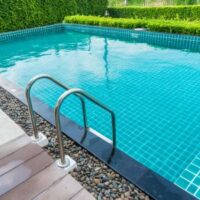Swimming Pool Barrier Requirements In California: Drowning Prevention

Drownings are a common occurrence in warmer climates like California, and their love for swimming and other water-based activities means children are at a higher risk. The California Department of Developmental Services (DDS) reports that drowning is a top cause of unintentional fatal injuries among children under 5 years old. Many other individuals of all ages suffer long-term disabilities from near-drownings, prompting lawmakers to take action. Officials at the state and local levels have established numerous regulations on pool safety, and an important one relates to swimming pool barrier requirements for drowning prevention.
If you or a loved one was affected by a drowning incident, you should be aware of how a pool owner’s violation of these laws could affect your legal rights. You can trust your Oakland drowning lawyer to address the details, though some background information about the applicable regulations is useful.
California’s Swimming Pool Barrier Law
Regardless of whether the pool is public or privately owned, all models built after 2007 are required to be enclosed with a fence. The regulations apply to all receptacles that contain more than 18 inches of water, including in-ground, above-ground, portable, inflatable, and lap pools. Even hot tubs, spas, and Jacuzzis are subject to these requirements. In sum:
- The fence must be at least 60 inches high.
- Gaps in between fence slats cannot exceed 4 inches.
- The barrier must surround the pool AND create separation from the residence.
- There must be a gate that opens outward and away from the pool, with a latch at least 60 inches off the ground.
- Handholds, pots, racks, and other objects that could enable a child to climb over the swimming pool barrier are prohibited.
Additional Regulations for Drowning Prevention
Aside from fencing and swimming pool barriers, there are rules that require enhanced protections. Owners of pools constructed or renovated after 2018 must also include a secondary drowning prevention feature. The details depend on the type of water feature, but owners may be required to install:
- An approved pool cover or locking spa cover;
- Exit alarms on doors and gates that access the water feature;
- Alarms that issue alerts when a person enters the pool; and,
- Self-closing and self-latching gates and doors; and,
- Gates with manual locking devices.
How Violations Affect Liability
Swimming pool accidents and drownings fall under California premises liability laws, which are based upon negligence. To recover compensation, you must prove that your injuries were caused by the owner’s failure to exercise reasonable care in maintaining the pool. A violation of state or local regulations on pool safety features is solid evidence of negligence, regardless of whether the owner was cited.
Our Oakland Drowning Accident Attorneys Can Advise You on the Laws
To learn more about your remedies after a near-drowning or fatal drowning accident, please contact Venardi Zurada, LLP. We can set up a complimentary case assessment at our offices in Oakland or Walnut Creek, CA. Once we learn more about your circumstances, a member of our team will explain how the legal process works.
Source:
dds.ca.gov/initiatives/drowning-prevention/

 The Official Injury Attorneys
The Official Injury Attorneys
